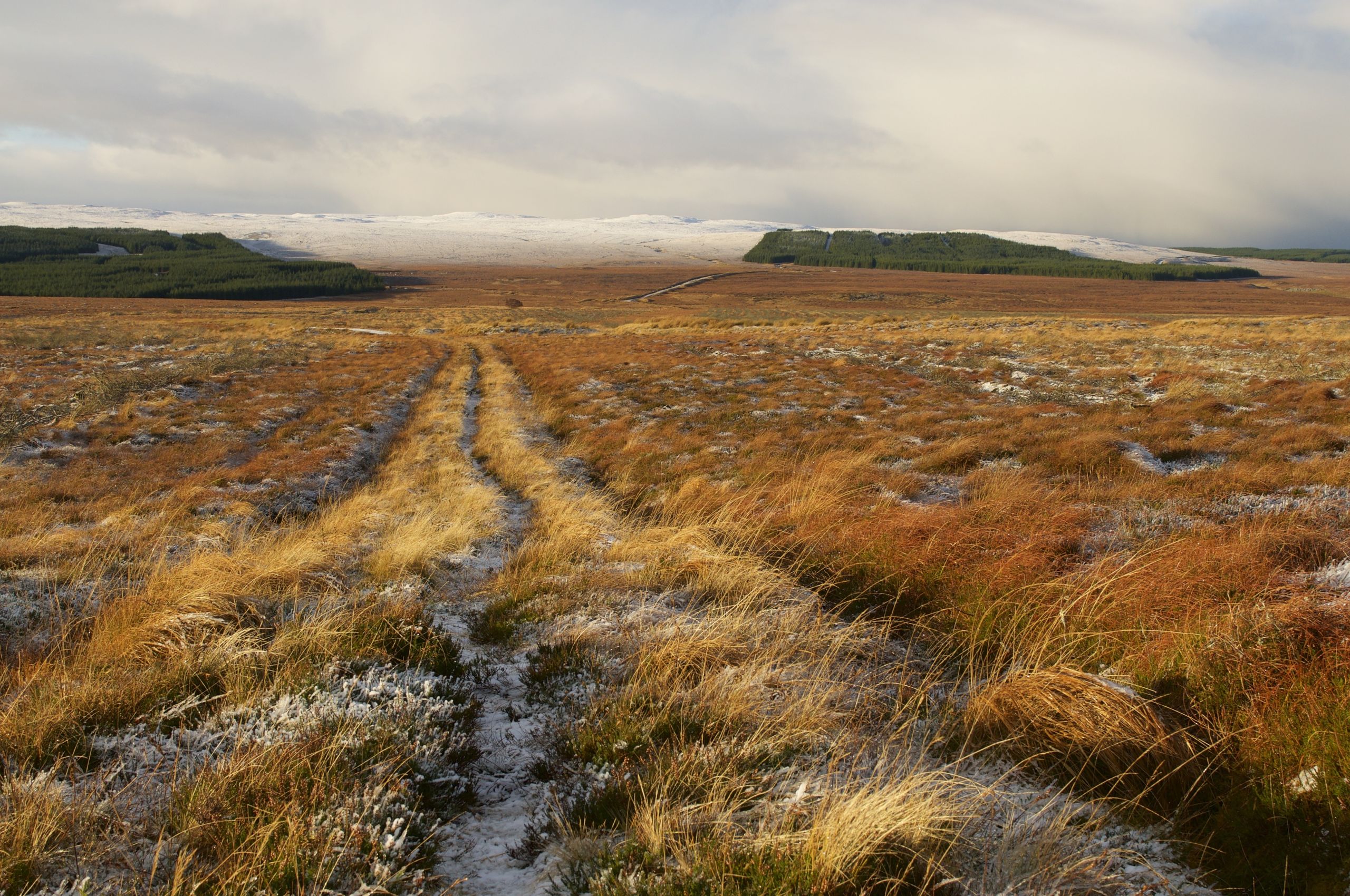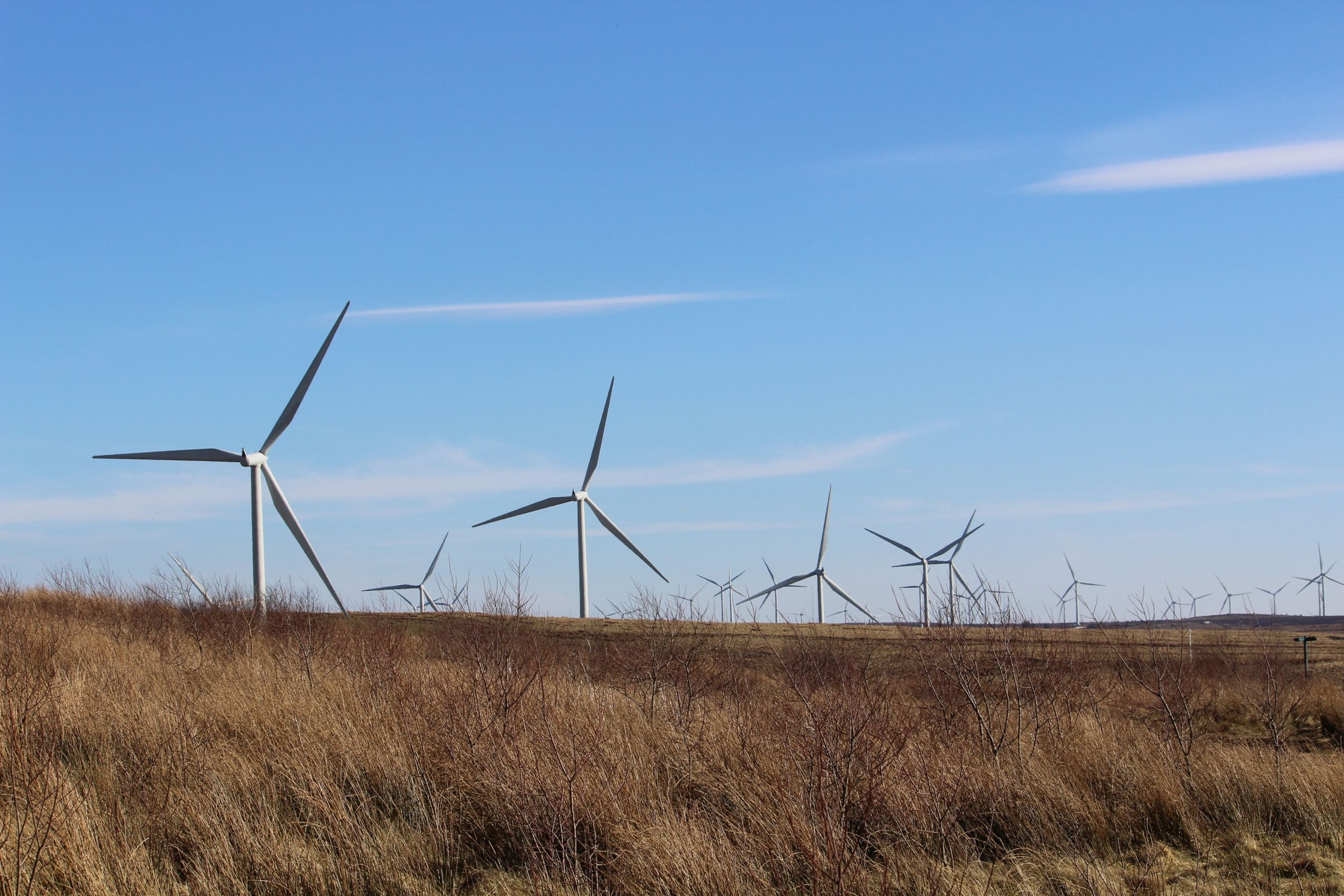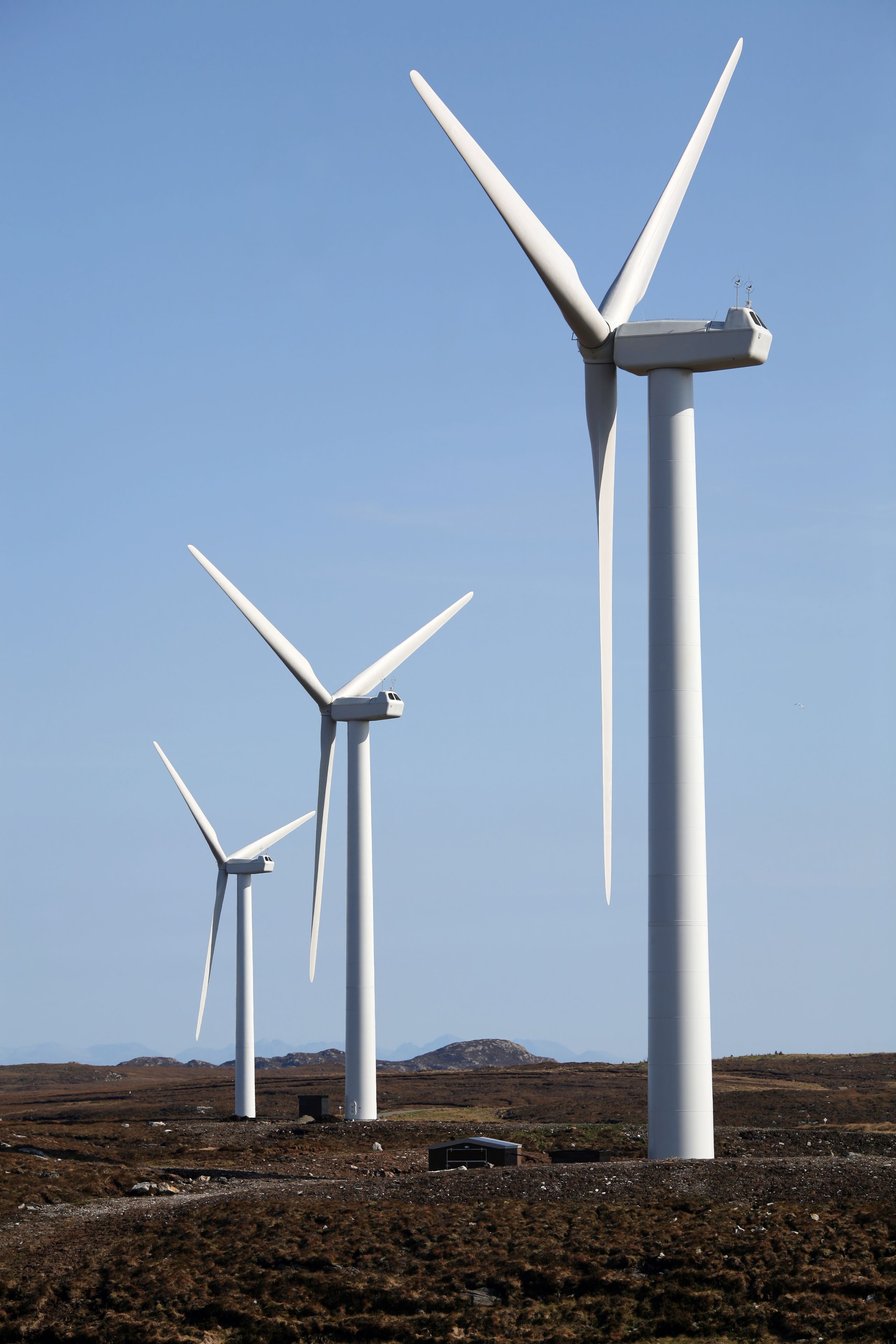Planning peatland windfarms with carbon calculations
A tool was developed to examine the environmental impact of peatland windfarms on carbon emissions.

As climate change continues to cause major environmental concern around the world, the use of renewable energy increases. By using non-fossil fuel energy sources such as the sun, wind and water, emissions of greenhouse gases can be reduced. But the increasing numbers of windfarm developments have also created cause for public debate.
Whilst many people support the use of wind turbines, some groups have made cases for the negative environmental impacts these developments can have on the landscape, and on the levels of carbon emissions generated from the construction process. Windfarms on Scottish peatlands can cause particularly high levels of carbon release, but research from the University of Aberdeen has led to better understanding of these areas and provided a way for developers to determine the environmental credibility of a potential site.
Where does carbon come from?
Although windfarms are developed on various land types and in the sea, peatlands are becoming increasingly popular for developers looking to buy large, inexpensive areas of land that will still provide high energy returns. Peatlands aren’t considered valuable farming land, so this helps to reduce investment costs for developers. However, the soil contains large amounts of carbon which, when disturbed, can contribute to greenhouse gas emissions.
Just one hectare of peatland can contain 5,000 tonnes of carbon that starts to be released into the atmosphere when wind turbines are installed. The deeper the soil, the more carbon will be emitted during construction, which also rapidly decomposes the peat and creates large holes in the land. As the surrounding peat drains into the holes, the peatland dries out, and huge quantities of carbon dioxide are released.

A tool for carbon calculations
Since 2008, Professor Jo Smith from the University’s Institute of Biological Sciences has been examining the impact of peatland windfarms on carbon emissions. Commissioned by the Scottish Government, this research is supporting the Government’s 2017 pledge to generate fifty percent of the country’s energy consumption from renewable energy by 2030.
The research team developed a model for calculating how much carbon would be released into the atmosphere during a windfarm installation, based on several data inputs. This model then became the Windfarm Carbon Calculator: a web-based tool that now contributes to the planning process for all windfarm developments in Scotland that generate 50MW of electricity or more.
Professor Jo Smith said: “The purpose of the tool is to allow us to comprehensively and consistently assess the carbon impact of windfarm developments. By inputting a range of data including how many turbines will be in the development, the size and lifetime of the windfarm, how much backup energy will be required and if any improvements or restoration of the land will be taking place, the tool can tell us the carbon payback time for the windfarm.”
The ‘carbon payback time’ calculation determines how many years a wind turbine must be in operation before its negative environmental impact is counterbalanced by the positive impact of generating clean energy.



Reducing environmental effects
“When wind turbines are installed, carbon is not only released from the peat, but also during all stages of the process and it’s important that we can understand how this process affects the amount of carbon dioxide being released into the atmosphere.
"Although land restoration can help to mitigate further carbon release, often the payback time is calculated to be longer than the lifetime of the windfarm. If this is the case, developers, planners and campaigners can use this data to determine if the windfarm installation should go ahead.”
By allowing planning authorities to quickly and easily check the carbon payback time of potential windfarms, the tool has enabled developers to avoid sensitive sites and consider areas where windfarm installations won’t cause harmful environmental impacts.
In 2018, the tool was further developed with new modelling that allows researchers to better understand the impact that 'repowering' windfarms could have on carbon emissions, which means replacing old wind turbines with new technology. While windfarms aim to generate electricity with a minimal carbon footprint, an assessment of repowering has to take into account key processes that affect this such as the total greenhouse gas emissions that would be generated in the construction of the repowered wind farm, and any disturbance to the environment that could reduce its capacity to capture carbon.
This project, managed by ‘Construction Scotland Innovation Centre’ and led by the Universities of Glasgow and Aberdeen, started a collaboration between the Scottish Environmental Protection Agency (SEPA), engineering company ARUP Group, and Scottish and Southern Energy plc (SSE) and ensured the tool would be appropriate to influence the next generation of windfarm development.
Following Scottish Government policy changes in the same year, SEPA made use of the tool compulsory for all new onshore windfarms planning applications greater than 50 MW. There have been 10 sites, totalling 1247 MW of the 2039 MW constructed or applied for since 2016, each of which had to be justified using the tool. The Windfarm Calculator has helped retain the huge stock of carbon held in Scottish soils by avoiding construction on deep peats and shifting the location of windfarms to soils lower in carbon. This preservation of intact peatlands provides a two-way reduction in net greenhouse gas emissions.
Using the results of the repowering project, Construction Scotland Innovation Centre and partners published a report that SSE and Scottish Power adopted to conclude that the re-engineering cost per turbine foundation would be between two and three times higher than building a new foundation for the target turbine type. This translates into a multi-million-pound cost-avoidance opportunity for a typical >50 MW windfarm and represents an opportunity to avoid further degradation of peatlands.
With these calculations in mind, in May 2020 Scottish Power acquired a 165 MW major new onshore wind project, including the repowering of Scotland’s very first commercial wind farm, Hagshaw Hill.
Impact
- The Windfarm Carbon Calculator is now a major part of the Scottish Government’s planning process for new windfarm developments on peatlands and has directly enabled measurable reductions in greenhouse gas emissions
- The tool guides the actions of the wind industry, ensuring planners understand the environmental credibility of a site and how best to reduce any potential carbon footprint
- Campaigners, politicians, community groups and the wider public can easily access the tool which offers a transparent methodology for potential developments and ensures benefits can be achieved
- Carbon calculations encourage developers to make the best decisions for the environment i.e. choosing shallow peatlands and restoring the land to its original condition to prevent drainage and excess carbon release
- The tool is now used by the Scottish Environment Protection Agency (SEPA) to ensure environmental benefits will be seen from all new peatland developments
- Research reshaped public policy for development of Scottish windfarms by encouraging public debate, informing decisions for planning and providing guidance for changes to regulation
- Developments to the Windfarm Calculator, via a joint consultancy project with Forest Research (part of DEFRA) and Glasgow University, highlighted the potential for “repowering” end-of-life windfarms by replacing old turbines with new technology.


